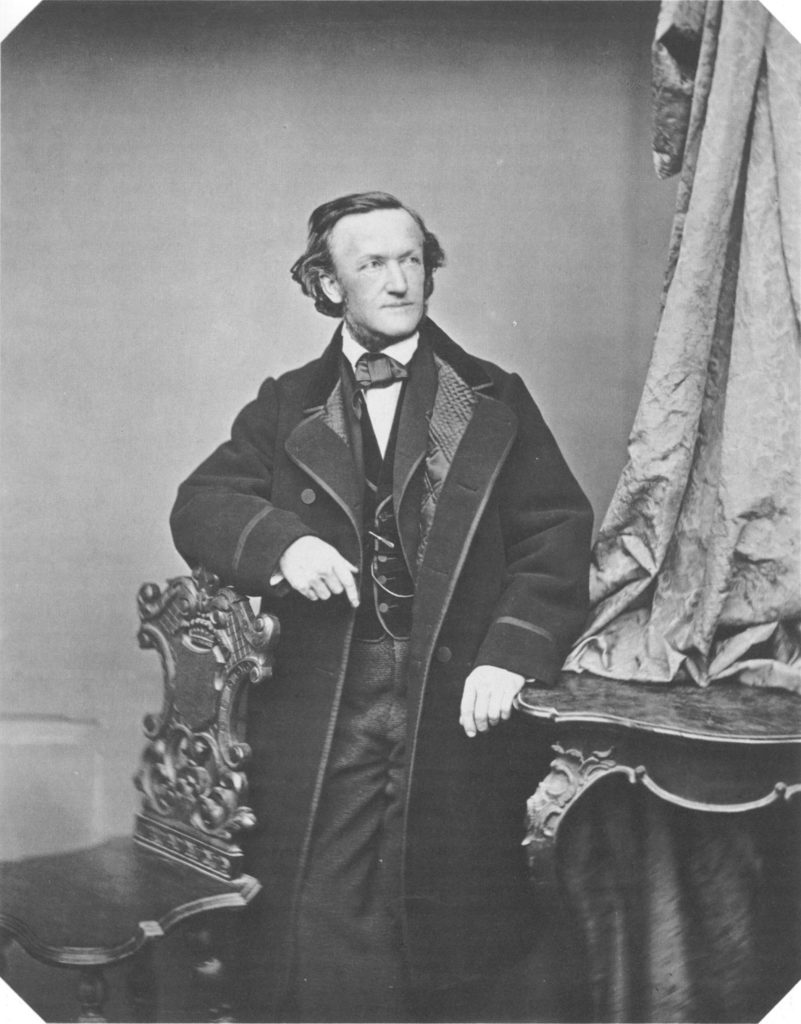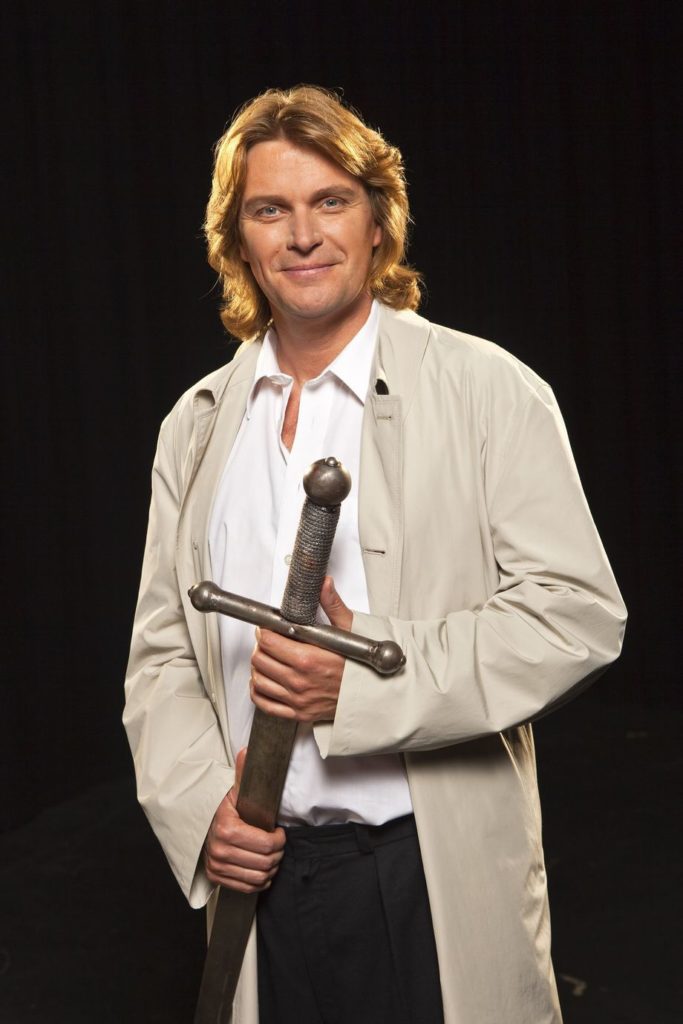Both Music History Monday (for August 28) and Dr. Bob Prescribes (for August 29) were dedicated to Richard Wagner’s Lohengrin. That Dr. Bob Prescribes post examined three traditional video performances of the opera, and ultimately recommended a Bayreuth Festival performance recorded in 1982, featuring Peter Hofmann as The Mystery Man in Silver (Lohengrin), Karan Armstrong as Elsa; Elizabeth Connell as Ortrud; and Leif Roar as Telramund; the production conducted by Woldemar Nelsson.
Back on August 29, I wrote:

“The recommended Peter Hofmann/Bayreuth Festival performance of Lohengrin is, in my estimation, the best traditional staging of the opera currently available on video. But it is not my favorite performance available on video, not by a long shot.”
As it turns out, that favorite video performance is an “updated” (though not absurdly so) production that was recorded in Baden-Baden in 2006, featuring the cast listed above and conducted by Kent Nagano.
Here’s what I really like about this Nagano-led performance.
Lohengrin is a fairytale: it’s my experience that various Knights of the Holy Grail do not typically “show up” in little boats pulled by bewitched swans in times of dire need. In fact, they do not show up at all, whether by plane, train, Greyhound Bus, or even Volkswagen Vanagons.
And what is the character of Lohengrin, anyway? He’s not a mortal; that’s pretty obvious. Maybe he once was, but then, who knows? All we know is that he’s a nauseatingly perfect fantasy construct, about as realistic a “person” as a full-sized sex doll. This is one reason why performances of Lohengrin can leave me cold, because the more the actor/singer portraying him attempts to humanize him, the more ludicrous he becomes. (Which is one of the reasons why I find Placido Domingo’s Latin-lover version of Lohengrin so . . . ridiculous.)
In truth, the character of Lohengrin is an archetype, an Aryan hero-construct: a supernatural being that talks to God and swans and takes his marching orders from a cup (the Holy Grail), literally for heaven’s sake. Do we really think that such a creature can marry a mortal woman (Elsa) and satisfy her: physically, emotionally, and spiritually?
Of course not. Lohengrin – like Wagner himself (or so Wagner would like to have believed) – exists in a place inaccessible to ordinary mortals like Elsa.
In Lohengrin, Wagner’s personal identification with his title character is – and not for the first or last time in his career – the defining aspect of a work. Musicologist John Chancellor suggests that the character of Lohengrin is a metaphor for:
“the artist in the modern world; he was Wagner, the miracle, the genius who appears in our daily lives. Genius – like that of Lohengrin or Wagner – demands a suspension of disbelief, as symbolized by Lohengrin’s stipulation to Elsa that she ask him no questions about himself. Genius demands total fidelity and highest trust; daily life demands information: our name, date, place of birth, our family.”

With all of this in mind, Klaus Florian Vogt’s Lohengrin is, to my eye and ear, just right. Vogt (born 1970) has a clear, sweet, almost boyish voice that for me, is perfect for the role. But more than that – with his hair and skin unnaturally silvered – he plays the role stiffly, like a puppet or robot or an alien that’s been stuffed into a human body. In my opinion, it works brilliantly.
As I suggested two weeks ago, the great character in the opera is not Lohengrin himself, nor his love interest Elsa (beautifully played here by Solveig Kringelborn, born 1963), but rather the villainous Ortrud, a power-hungry worshipper of the “old gods” and a practitioner of black magic. It is Ortrud whose evil character and machinations drive the opera, and in theory at least, we shouldn’t be able to take our eyes off of her when she is on stage.
In this performance, Ortrud is played by the phenomenal Waltraud Meier (born 1956). In fact, it is impossible for us to take our eyes off of her when she is on stage! What a voice! What presence! What evil seeping from her every pore! She is Lady MacBeth, the Queen of the Night, Bellatrix Lastrange, and Cruella de Vil all rolled into one! This production of the opera could rightly be renamed “Ortrud,” so dominant is the character as portrayed by Waltraud Meier.
Game Plan
Enlarging on the examination of Lohengrin I created for my The Teaching Company/The Great Courses/Wondrium survey The Music of Richard Wagner, we will examine the opera in some detail, using this superb video production to illustrate our examination as it goes along.
For our information: a typical Dr. Bob Prescribes post runs between 2500 and 3000 words. If published as a single post, this examination of Lohengrin would run nearly 9000 words, with a total of 17 video examples. That’s a lot of words and many gigs of video memory, frankly too many words and too much memory for a single post. So I’m dividing this video-aided examination of Lohengrin into two posts, the second of which will appear next Tuesday, on September 26.
(I have never before done such an in depth, multi-session, video-illustrated examination of an opera on Patreon. I will be most interested to hear from you as to whether or not you’d like to see more of the same. If you are amenable, I would do such an operatic examination every three or four months.)
On to the opera, the last of his works Richard Wagner was willing to call an “opera.”…
Become a Patron!